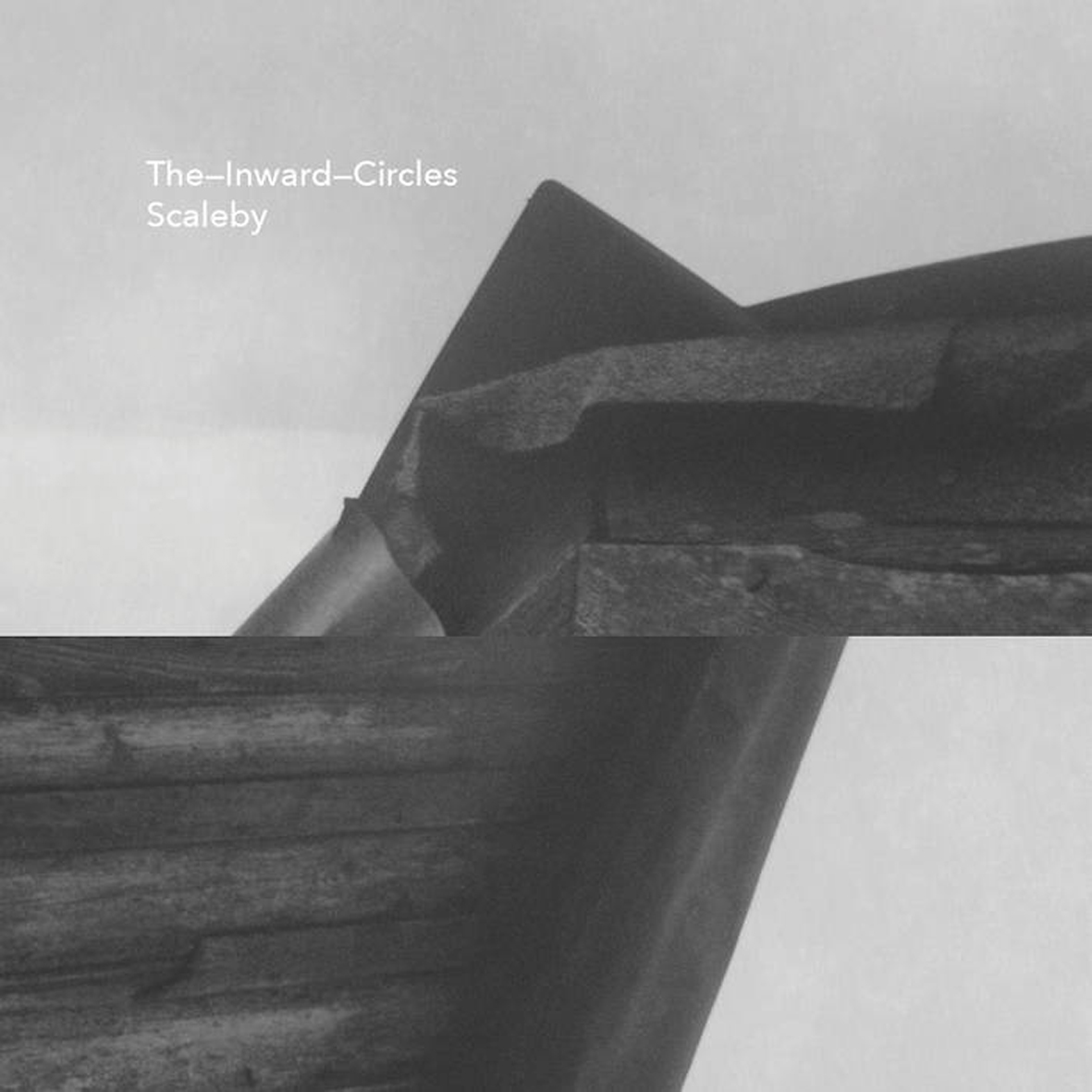 This digital-only sister release to And Right Lines Limit and Close All Bodies is a suite of comparatively simple, warm, and straightforward drone pieces, which presumably explains why its companion warranted a physical release while Scaleby did not.  That lack of fanfare makes sense, as Right Lines Limit is a far more complex and ambitious work that expands the limits of Skelton's vision while this release is merely nine variations on a theme firmly within his comfort zone.  I happen to be quite fond of that comfort zone though, as these bleary, churning reveries play much more to Skelton's strengths than some of his more cosmic, universe-chewing excursions of late.  While the recurring Inward Circles' theme of obfuscation is still in full effect (there are no recognizable stringed instruments to be found), Scaleby nonetheless carves out its own lovely niche of languorously vaporous, dreamlike beauty beneath a patina of shifting crackle, grit, and hiss.
This digital-only sister release to And Right Lines Limit and Close All Bodies is a suite of comparatively simple, warm, and straightforward drone pieces, which presumably explains why its companion warranted a physical release while Scaleby did not.  That lack of fanfare makes sense, as Right Lines Limit is a far more complex and ambitious work that expands the limits of Skelton's vision while this release is merely nine variations on a theme firmly within his comfort zone.  I happen to be quite fond of that comfort zone though, as these bleary, churning reveries play much more to Skelton's strengths than some of his more cosmic, universe-chewing excursions of late.  While the recurring Inward Circles' theme of obfuscation is still in full effect (there are no recognizable stringed instruments to be found), Scaleby nonetheless carves out its own lovely niche of languorously vaporous, dreamlike beauty beneath a patina of shifting crackle, grit, and hiss.
Scaleby takes its title and inspiration from one of Skelton’s favorite subjects: a body found in a bog.  This particular one was clad in deer skin and was found in the small parish of Scaleby in Skelton's beloved Cumbria.  I am uncertain how great a role our stylish bog-friend may have directly played in the shaping of the actual music here, but Scaleby gamely continues The Inward Circles' fascination with the themes of burial, decay, and transformation.  In more practical terms, the consistent thread that runs throughout the album is that of gently undulating and blurred synth-like drones, though those drones undergo varying degrees of decay and disruption.  Presumably, those tones were originally produced using bowed strings or something similarly organic, but they have since been smeared and smoothed into soft-focus unrecognizability.  On early pieces, such as the brief "Scaleby, I," Skelton leaves their placid languor relatively unmolested, which results in an aesthetic not unlike a gently rippling pool of murky, viscous liquid.  Later, that changes quite a bit, imbuing Scaleby with a mysterious and deepening arc.  Obviously, parallels to an actual bog are unavoidable here, as Scaleby feels like a slow descent from the surface to the depths, unlocking some dark and long-buried secrets along the way.  To his credit, Skelton employs a light touch in that endeavor, avoiding bombast or gloom and instead allowing the darkness to gradually creep in as increasingly corrosive textures obscure and fray the central motif.
Given that arc, it takes a few songs before Scaleby begins to develop into something more substantial.  That transition starts to become evident with "Scaleby, III," as Skelton’s calm, slow-moving drones are veiled behind a sizzling and blown-out-sounding harmonic cloud.  The equally brief following piece performs a similar bit of alchemy, gnawing at the edges of the hazy idyll with a shifting snarl of crackle and hiss.  That said, it is not until the album’s halfway point ("Scaleby, V") that Skelton truly begins to stretch out and shape his main theme into something deeper and heavier, as the calmly submerged thrum disappears completely to make room for an oscillating and metallic swirl of uneasily harmonizing overtones.  That largely sets the tone for the remainder of the album, as the four successive pieces are similarly gnarled and shadowy variations, ranging from murky throbbing ("Scaleby, VI") to heavenly chords swathed in pulsing static ("Scaleby, VII") to a dense and shimmering fog propelled by a heavy rhythmic undercurrent of rumble and hiss ("Scaleby, VIII").  Curiously, that descent into darker and darker waters arguably comes to an end with the closing centerpiece, "Scaleby, IX."  Rather than being more extreme than what came before, it instead feels like Scaleby’s recurring central motif is finally given a chance to stretch out and blossom into an immersive, fully formed soundworld (rather than just providing a fleeting glimpse of one).  While Skelton admittedly does not have any grand statement hidden up his sleeve for the finale, Scaleby's final act is nevertheless a satisfying coda of blearily melancholy arpeggios and gently swaying ambience viscerally ravaged by harshly grinding metallic textures.
Naturally, Scaleby has some arguable shortcomings, but they are largely a matter of perspective and somewhat inherent in what Skelton is trying to do here.  For example, a lot of these songs are quite brief and blur together due to their thematic similarity and constrained palette.  If Scaleby were billed as a major artistic statement, I suppose that would be problematic for me, but it is perfectly fine for a modest, digital-only extended fantasia on a single theme.  In fact, I quite like it.  While it may be a minor release, it is a well-executed and appealingly unusual drone album, as well as a very listenable, complete, and compact vision.  Anyone hoping for another dose of The Inward Circles' recent crushing epics of element force can probably give this one a pass, but most fans will likely find Scaleby to be an absorbing, simple, and pure oasis from Skelton's more challenging and expansive fare.
 
Read More

